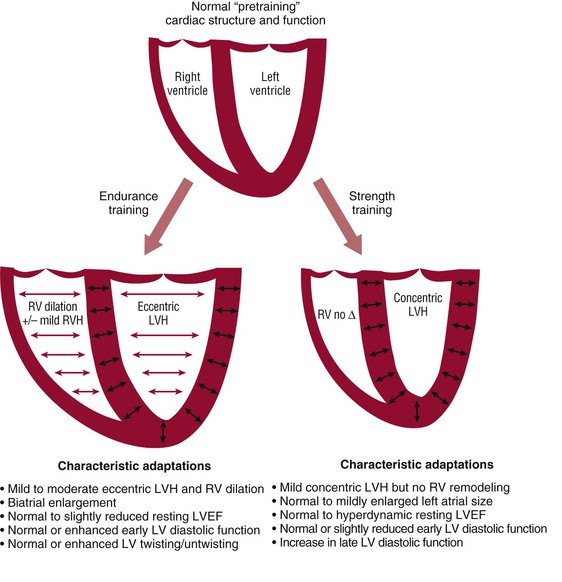let's talk about the 'athlete's heart'...
I did additional research when I was a fellow in cardiology, just starting out, into this topic as it was near and dear to me even then-which is now ~30 years ago
It is commonly associated with 3 things:
bradycardia, cardiomegaly (a dilated/big heart) and cardiac hypertrophy (a thick heart muscle)
In reality, it can be only 2 of the 3 and usually is-depending on what sport the athlete participates in.
Endurance athletes have big, dilated hearts that are very efficient with training and because of increased blood volume and other reasons, the heart dilates and has a larger stroke volume each beat and the heart rate goes lower as this happens and bradycardia is more likely-especially in males.
Strength athletes get thicker, hearts that respond to resistance training with increased LV thickness and mass.
Runners/cyclists have endurance trained hearts. This leads to eccentric hypertrophy. This seems to me to be more likely to be associated with bradycardia-slow heart rates.
Weight lifters/boxers have strength trained hearts. This leads to concentric hypertrophy.

It is important to distinguish between athlete's heart and hypertrophic cardiomyopathy (HCM), a serious cardiovascular disease characterised by thickening of the heart's walls, which produces a similar ECG pattern at rest. This genetic disorder is found in one of 500 Americans and is a leading cause of sudden cardiac death in young athletes (although only about 8% of all cases of sudden death are actually exercise-related).[ The following table shows some key distinguishing characteristics of the two conditions.

An echocardiogram is usually helpful to differentiate these conditions when it is borderline.
The echo will list the LVs *septal wall, and the LVpw *posterior wall also. Normal is ~1.1-1.2 cm or 11-12 mm, to make the better comparison the the chart above.
I would personally recommend to my patients that a cardiac MRI be done only for patients who have 'in between numbers' of 1.5 cm or higher, for LV thickness.
Hope this helps. I'm off for the weekend, for a change after being on call-Xmas, New Years eve, New years day...cheers!
I did additional research when I was a fellow in cardiology, just starting out, into this topic as it was near and dear to me even then-which is now ~30 years ago
It is commonly associated with 3 things:
bradycardia, cardiomegaly (a dilated/big heart) and cardiac hypertrophy (a thick heart muscle)
In reality, it can be only 2 of the 3 and usually is-depending on what sport the athlete participates in.
Endurance athletes have big, dilated hearts that are very efficient with training and because of increased blood volume and other reasons, the heart dilates and has a larger stroke volume each beat and the heart rate goes lower as this happens and bradycardia is more likely-especially in males.
Strength athletes get thicker, hearts that respond to resistance training with increased LV thickness and mass.
Runners/cyclists have endurance trained hearts. This leads to eccentric hypertrophy. This seems to me to be more likely to be associated with bradycardia-slow heart rates.
Weight lifters/boxers have strength trained hearts. This leads to concentric hypertrophy.

It is important to distinguish between athlete's heart and hypertrophic cardiomyopathy (HCM), a serious cardiovascular disease characterised by thickening of the heart's walls, which produces a similar ECG pattern at rest. This genetic disorder is found in one of 500 Americans and is a leading cause of sudden cardiac death in young athletes (although only about 8% of all cases of sudden death are actually exercise-related).[ The following table shows some key distinguishing characteristics of the two conditions.

An echocardiogram is usually helpful to differentiate these conditions when it is borderline.
The echo will list the LVs *septal wall, and the LVpw *posterior wall also. Normal is ~1.1-1.2 cm or 11-12 mm, to make the better comparison the the chart above.
I would personally recommend to my patients that a cardiac MRI be done only for patients who have 'in between numbers' of 1.5 cm or higher, for LV thickness.
Hope this helps. I'm off for the weekend, for a change after being on call-Xmas, New Years eve, New years day...cheers!